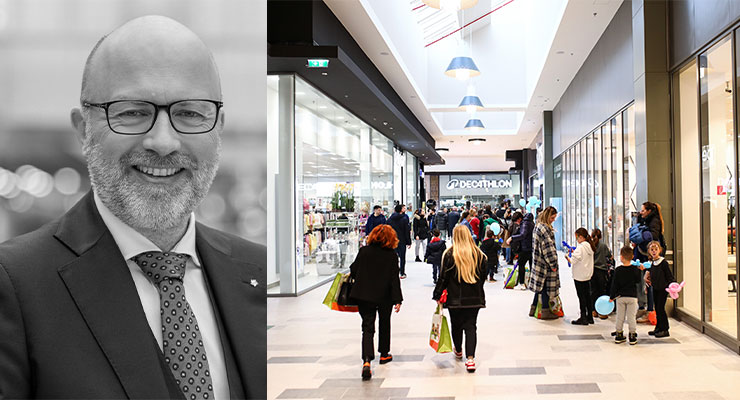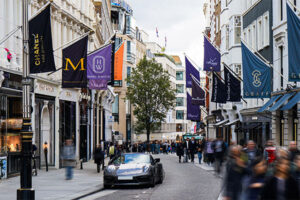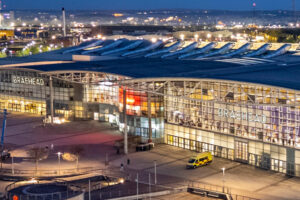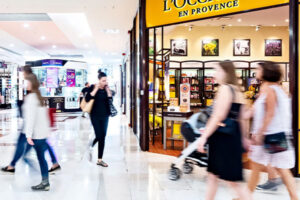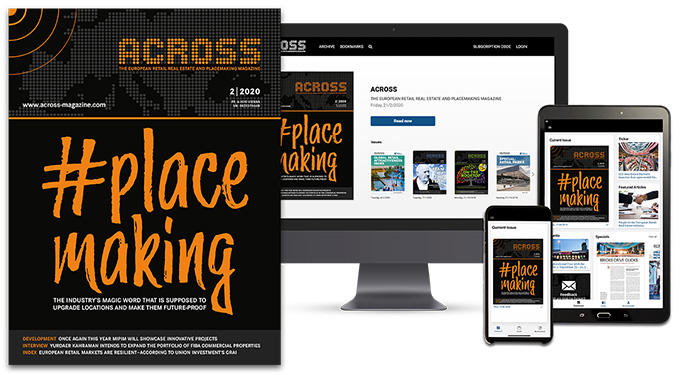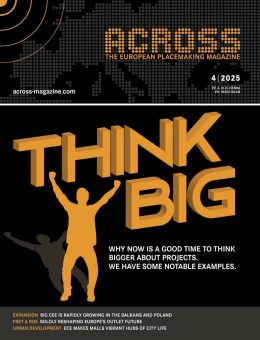ACROSS: The partial opening of King Cross in Zagreb has been one of the 2025 highlights for SES so far. What makes that particular center state of the art?
Christoph Andexlinger: KING CROSS was once the first shopping center to open in Zagreb, and we have gradually taken ownership of it over the last few years. We have been focused on two central goals since the outset, both of which are now being consistently implemented. First of all: The original mall was architecturally designed as a figure eight – a circular layout with two arms, on just one level, the first floor. As a result, visitor footfall was spread across two separate areas. Our goal was to streamline the structure, thereby creating a clear, central space. That has enabled us to consolidate customer flow and increase footfall for the individual retailers, which is crucial when it comes to business success. The same number of visitors, but with greater concentration in fewer areas equals greater exposure to customer footfall and better sales for the stores.
ACROSS: What is the other key point?
Andexlinger: We are opening up the property to the outside world to a greater extent – primarily through gastronomic offers. We have already successfully implemented such measures at our Austrian centers ATRIO and ZIMBAPARK, where individual gastronomy outlets have been integrated into outdoor areas. At KING CROSS, we’re going one step further: A food court that includes attractive outdoor areas is being created for the first time. It’s crystal clear to us that the introverted malls of the 1990s and 2000s no longer serve the needs of today’s customers. The trend is towards openness and diversity – both inside and out. Shopping malls, like city centers, have increasingly evolved into social meeting places.
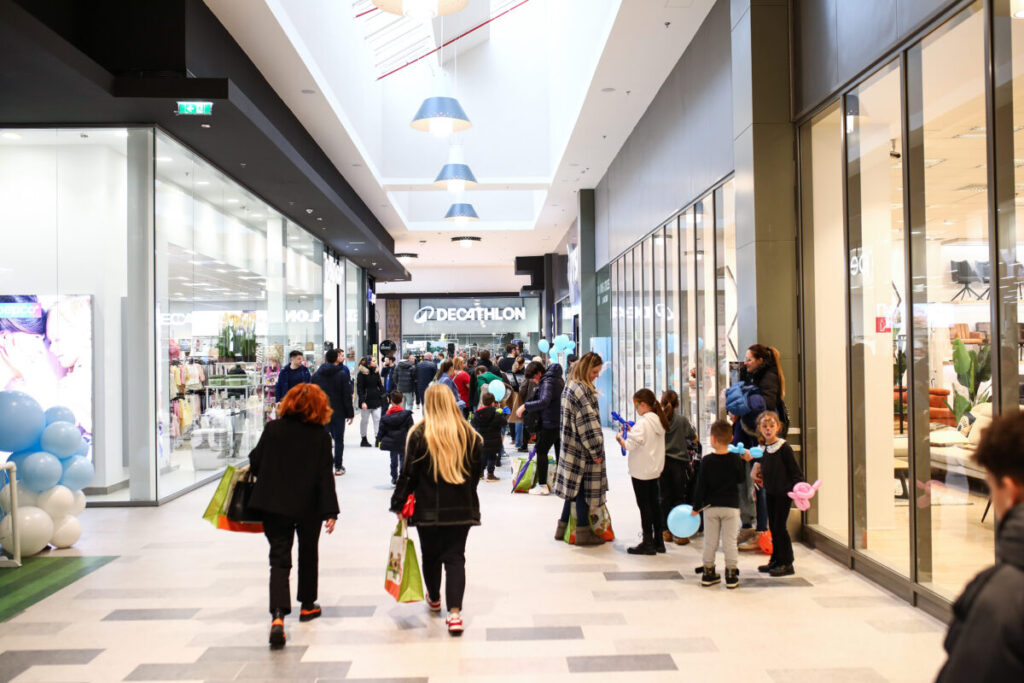
ACROSS: What impact has this trend had on the retail sector in general?
Andexlinger: Retail space is on the decline, especially in weaker locations. Those that fail to develop into strong locations will disappear in the long term. However, good city center locations and well-positioned malls continue to attract high customer footfall and expansive retail concepts. There’s a tremendous need for reallife meeting places. That’s something we’ve observed at our locations. This general social development is particularly evident in the cultural sector, for example: There have never been as many live concerts as there are today. The Danube Island Festival in Vienna alone attracts more than a million people over a three-day period. Mega concerts like Lady Gaga’s attract upwards of two million people to the Copacabana. It’s a different business area, of course, but the principle remains the same: People want to get out, they want experiences, and they want community.
ACROSS: Returning to the shopping center: How do modern centers satisfy this need?
Andexlinger: Shopping centers have a huge advantage over many other meeting places: They provide covered areas when the weather is bad and can open up to the outside when the weather is nice. They’re also always kept at a pleasant temperature. That gives them a clear competitive advantage, and we constantly work towards developing our locations accordingly. At SES, focusing on the customer has always been the guiding principle in our daily activities. The question remains the same: What do people want – or even better – how can we positively
surprise them? Of course, finding the right industry and store mix is a key factor, which we do in cooperation with our partners. Beyond that, we put an enormous amount of effort into creating holistic experiences. Take our “Planet Lollipop” playground, for example. The investment we have made in the concept, design, and equipment there is truly remarkable. It goes beyond simply looking after children at a given location and in a certain way – we create quality experiences that you can see and feel.
ACROSS: Can you give us some other examples?
Andexlinger: Sound is an issue: Many shopping centers use standardized loudspeaker systems. While they meet the legal requirements when it comes to announcements and emergency messages, they fall far short of what is possible in terms of sound. Our approach is different: We’ve deliberately opted to use highquality sound systems. While that may initially seem like a minor consideration, it changes the entire spatial experience. It often only becomes apparent when you return to a center equipped with conventional technology. Suddenly everything seems duller, more restless. Music can have an incredible effect – both positive and negative. If there’s no treble, no mid-range or, most importantly, no bass, there’s a subliminal sensory overload that visitors are not consciously aware of, but which strongly influences their sense of well-being. Our philosophy is simple: Quality should be present – even in places in which it cannot be seen at first glance, but where it has a long-term effect. After all, it’s precisely those details that often make a crucial difference for customers.
ACROSS: Not only has pure shopping taken a back seat to experience, community, and the feel-good factor, but there has also been a clear trend towards polarization in the retail offer. How has that reality been reflected at SES?
Andexlinger: Polarization in retail has certainly become noticeable, but by no means is it a new phenomenon. This situation has always existed. Take H&M’s entry into the market, for example; that was a real revolution at the time: fashionable design at an extremely low price. It was new, it was bold, and, above all, it was clearly positioned. That’s precisely the point: People want clarity. From what we’ve observed, the problem is not so much polarization as such, but rather the lack of clear positioning – especially in the mid-range segment. Luxury brands and premium brands – and I’m referring more to premium in the context of shopping centers – have clear identities. They know what they stand for, and customers appreciate that.
ACROSS: What does that mean for the mid-range segment?
Andexlinger: That’s where I see the biggest challenge – not because the segment has no chance in principle, but because many providers no longer convey a clear message. However, there are certainly examples from the mid-range that work extremely well – simply because customers know exactly what to expect and what not to expect. Such clarity is crucial. Ultimately, retail’s job is to curate, inspire, and entertain. If you want to survive in brick-and-mortar retail today, trying to be a better version of an online store is not an option. Those who simply digitally replicate what e-commerce can already do better will ultimately fail. Brick-and-mortar retail has its own strengths – strengths that must be used in a targeted manner and communicated clearly.
ACROSS: In other words, the mid-range segment is not dying, but there’s no room for mediocrity.
Andexlinger: That’s exactly right. The solution lies in not trying to cater to everything to a certain extent, stretching yourself thin in every direction, but not really taking a clear position anywhere. Such behavior makes everything arbitrary, which is fatal. Why have discounters become so strong? It’s because their positioning is clear – radically simple, price-oriented, and comprehensible. And, why are premium and luxury brands successful? It’s also due to their clear identities as well as their consistency in quality, presentation, and customer orientation. If the so-called mid-range segment adopts a clear stance and develops more in the direction of the premium segment – both visually and in terms of content – then it will definitely have a future. After all, consumer expectation is on the rise. We are all evolving. What was considered “upmarket” 10 years ago has since become standard in many places – simply because expectations have also grown.
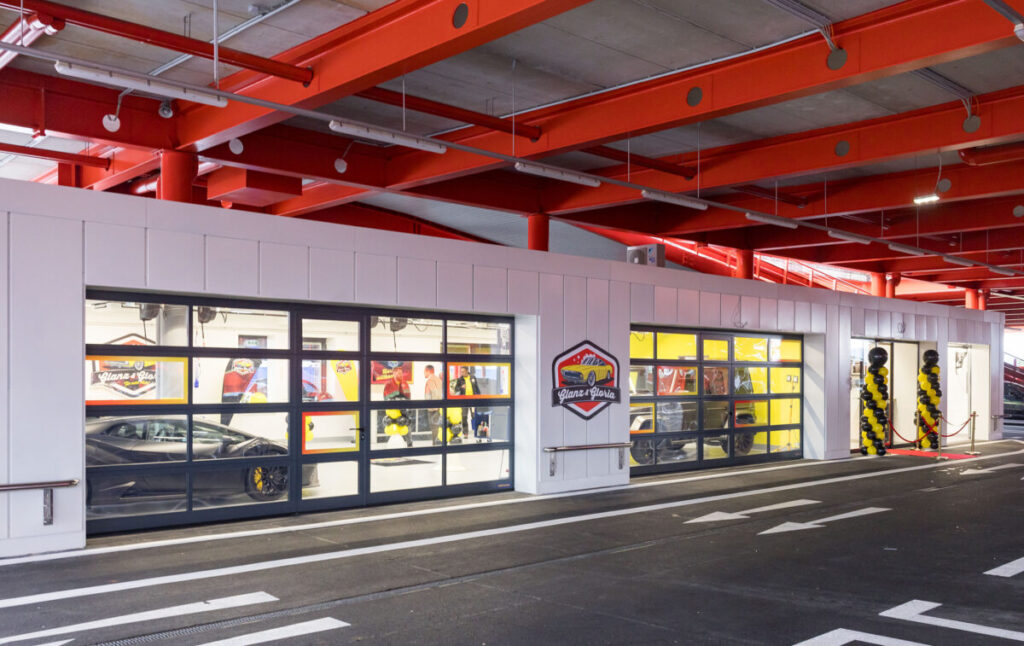
BRANDING AND STAGING EXAMPLE AT AN SES CENTER: SES has opened a car wash on the parking deck of EUROPARK in Salzburg – not a traditional car wash, but a high-quality hand cleaning service. The price for exterior cleaning starts at 69 euros; and the service has been deliberately positioned as exclusive. As a result, a separate brand was developed for the service. The name, “Glanz & Gloria,” was chosen as a means of conveying quality and uniqueness and sums up exactly what the brand aims to communicate: high quality, charm, and style. The result is a uniform, 1960s-inspired image: retro elements, a bit of chrome, and a bit of nostalgia. “That’s the only way to credibly communicate a starting price of 69 euros,” says Andexlinger.
ACROSS: The so-called mid-range segment often draws from the middle class. Isn’t something currently being lost in that regard?
Andexlinger: No. Our shopping centers are havens for SMEs, which is advantageous. Many of our tenants are regional, often ownermanaged companies. They are in direct competition with international chains, which has a positive effect. They’re able to closely observe what the big players are doing and to learn from them. At the same time, they have strengths that international corporations cannot offer. Local retailers know their customers and their regions. They can react flexibly. Let’s return to the example of Salzburg: Regional retailers there know that they need to focus more on traditional clothing in the run-up to traditional festivals, and they can adapt their ranges accordingly. International brands can’t do that – they produce goods on a global, standardized basis with little scope for local characteristics.
ACROSS: So, what opportunities exist for SMEs?
Andexlinger: If you know your strengths and use them in a targeted manner – with a clear profile and real added value – you will go far beyond mediocrity. It’s not about being mediocre, it’s about providing a high-quality offer for a broad target group – and consistently doing so. Mediocrity is never an option. The mid-range segment needs to be strong, but wellconceived: good retailers that are reliable, have clear product ranges, and offer outstanding service – all of those are not a matter of course, but a major asset.
ACROSS: What, then, is at the core of a successful concept?
Andexlinger: Reliability. In many areas of society, we can see what happens when trust erodes – be it in politics, in international relations, or even in everyday life. That shapes consumer behavior. People want to be able to rely on something – on brands, on retailers, and on places like shopping centers. Interspar’s Weinwelt is an excellent example: It combines online availability with the security of brick-andmortar retail to a strong model. You can pick up your parcel and buy something else at the same time. Zara does something similar through verticalization. However, there are also counterexamples: New Yorker is completely doing away with its online presence and is concentrating entirely on its brick-and-mortar retail locations, which also works. One key factor remains: A clear, powerful, and bold profile is needed.
SES CORE ISSUES: GASTRONOMY, HEALTH, AND MOBILITY: SES continues to focus on gastronomy – not necessarily in terms of the development of space alone, but much more in terms of quality and differentiation – as well as the rapidly growing “Health & Beauty” segment. Those areas are growing at an above-average rate – both in general as well as at SES centers. The concept of health parks is a major new addition to the SES strategy. They will make the issue of health more visible, more tangible, and more accessible at our centers. “Our approach involves the integration of the health sector directly into the shopping center context – with visible practice entrances, therapy rooms, and recreational areas,” says Andexlinger. The concept will be curated in collaboration with our experienced partner in this field Vinzenz Gruppe Service. We would also like to make a tangible contribution to the common good. Our goal: Doctors and therapists will be able to concentrate on their core tasks; we will be responsible for everything environment-oriented, such as cleaning. Another area that SES is massively expanding is the charging infrastructure for e-mobility. There’s a clear trend: The use of e-charging points is on the rise and the length of stay has increased; therefore, reliable infrastructure is needed for e-mobility.
ACROSS: Are you saying that it’s less about belonging to a “pole” and more about clarity of positioning?
Andexlinger: Exactly. Polarization is just a symptom. Those who are successful today are clearly positioned. Those who are in between, who have no profile, are disappearing. Image plays a huge role for customers, especially in the fashion sector, but in the food sector as well. While pricing is relevant, image has a greater impact on decisionmaking. At a time when we are flooded with cheap products from abroad – products that sometimes don’t even meet our safety standards – trust is once again gaining in importance. People will make more conscious decisions in the long term.
ACROSS: What requirements do you have of your rental partners – regardless of which price segment they come from?
Andexlinger: As is the case with any retailer, our aim is always to create real added value for our customers with every new shop partner. It doesn’t do anyone any good if we say we have 2,000 sq m of vacancy at a particular moment, and then we give it to the first retailer that comes along, even though we know they can’t compete in such an environment. That wouldn’t be the right kind of partnership approach to take either; for us, partnership involves more than just signing a rental agreement. It simply has to make sense – for both sides. Generally speaking, we don’t rule out any tenants, but they have to be a good fit for the particular location and the overall strategy.
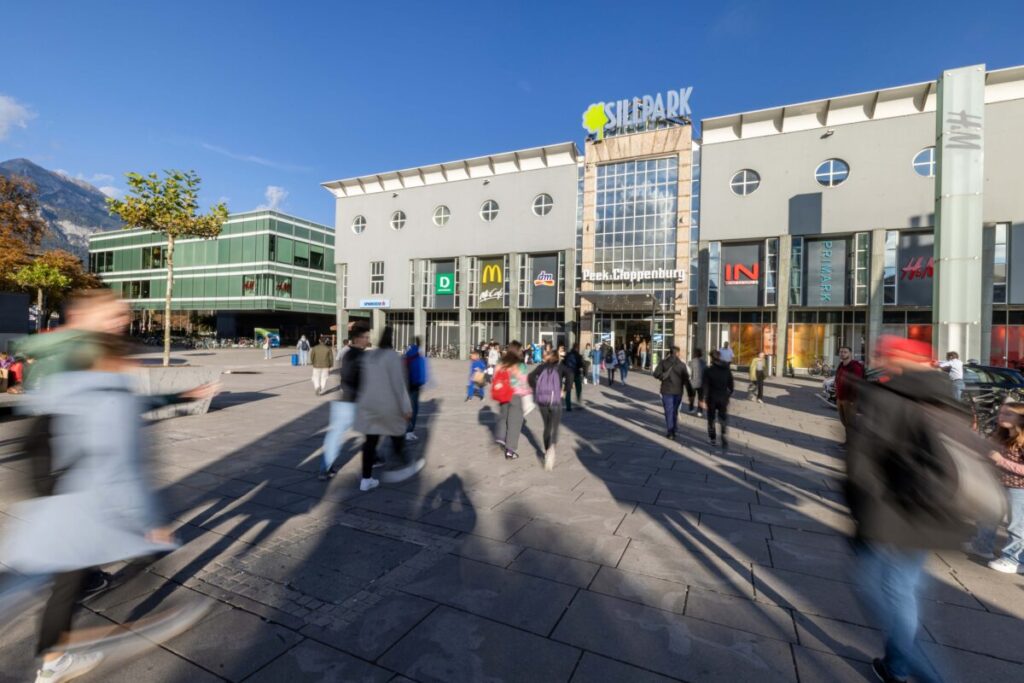
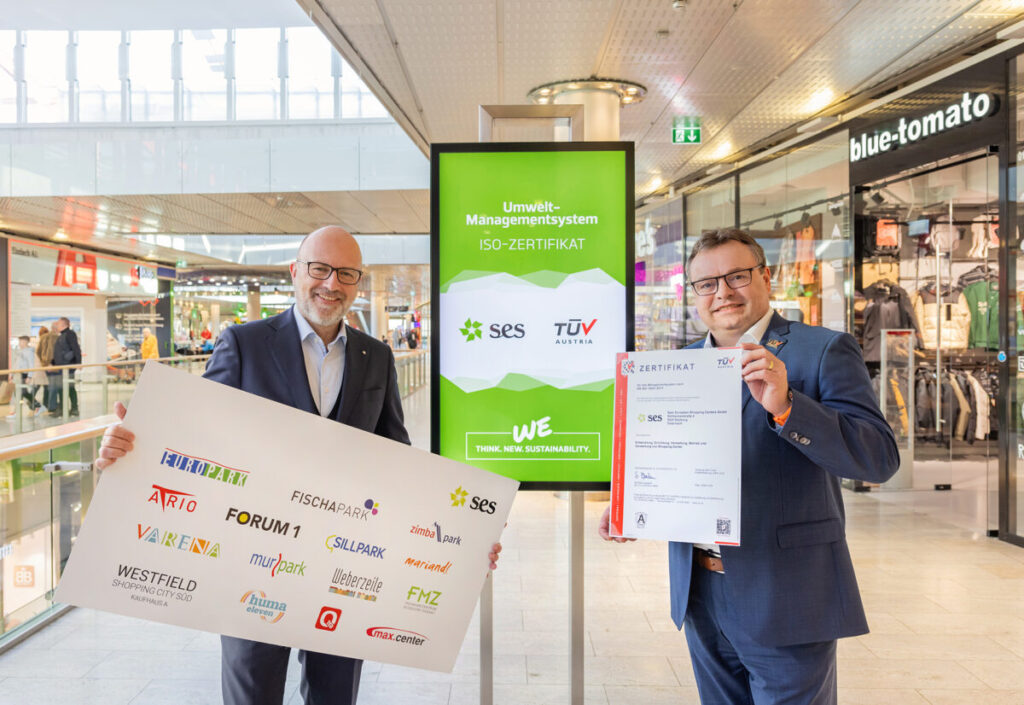
ACROSS: That brings us to the role of the shopping center as a brand itself. What does this mean for the future of shopping centers?
Andexlinger: We stopped using the term “shopping center” internally a long time ago. Nowadays, we talk about shopping destinations – because it’s about more than just shopping: It’s about gastronomy, experience, and leisure. That’s true of many of our locations. However, there are also traditional centers that are all about the quick supply of goods, such as FORUM1, which is located at the main station in Salzburg. People who shop there want to get what they need quickly, efficiently, and without entertainment. That can also work extremely well, but only if you position the center correctly. We’ve learned an important lesson: Not every location can or should be everything. That’s why each of our properties has its own name – because each property has its own character. When it comes to our local market presence, we even go as far as to have each of our shopping malls work with its own agency. That’s something we do deliberately, because we don’t believe that there should be a one-size-fits-all approach to local communication.
ACROSS: Finally, what is your general message during uncertain times?
Andexlinger: We must not allow ourselves to lose our zest for life. The savings rate in our home market of Austria is over 11 percent, which is not economically healthy. There is money to be spent. We have to do a better job of communicating to the masses that consumption – conscious and differentiated – is not the problem, but part of the solution. After all, economic stability is dependent upon trust and a desire to look toward the future.
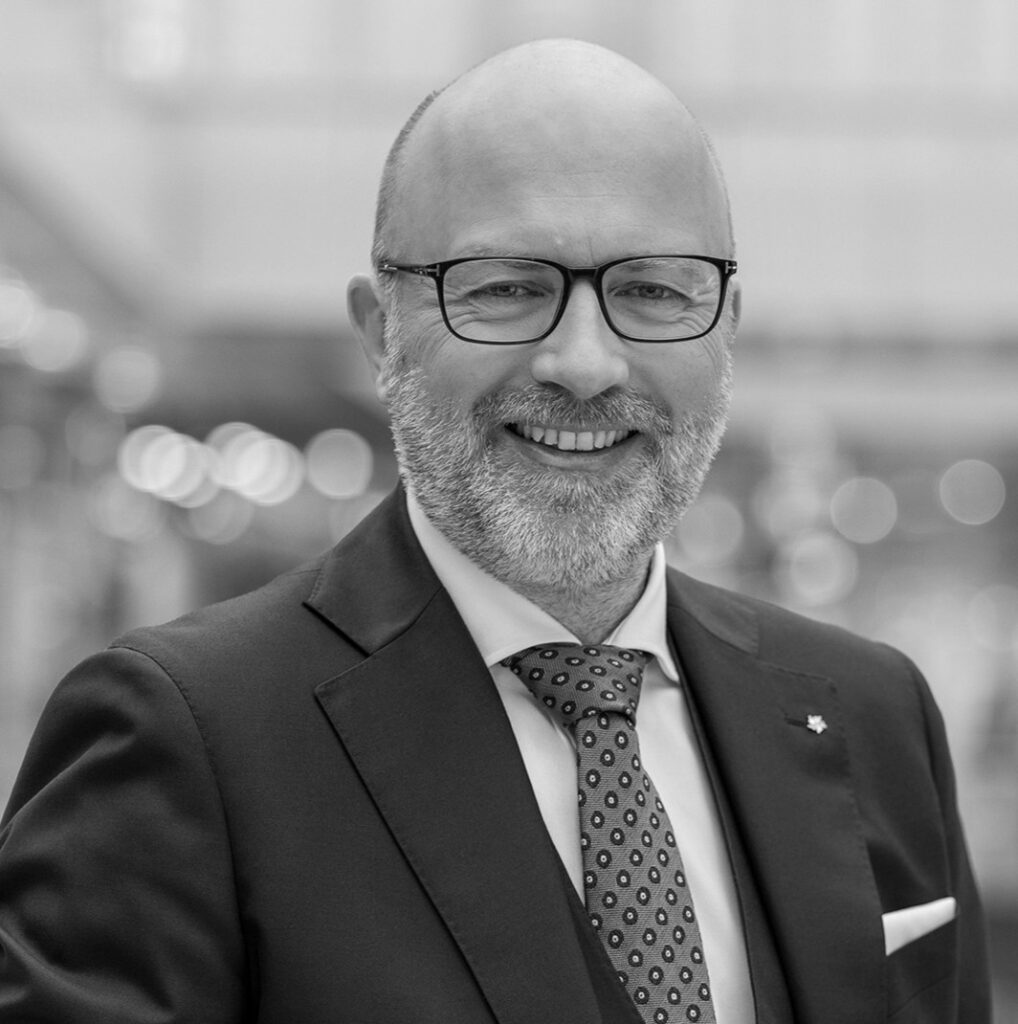
Christoph Andexlinger
Christoph Andexlinger is CEO of SES Spar European Shopping Centers
